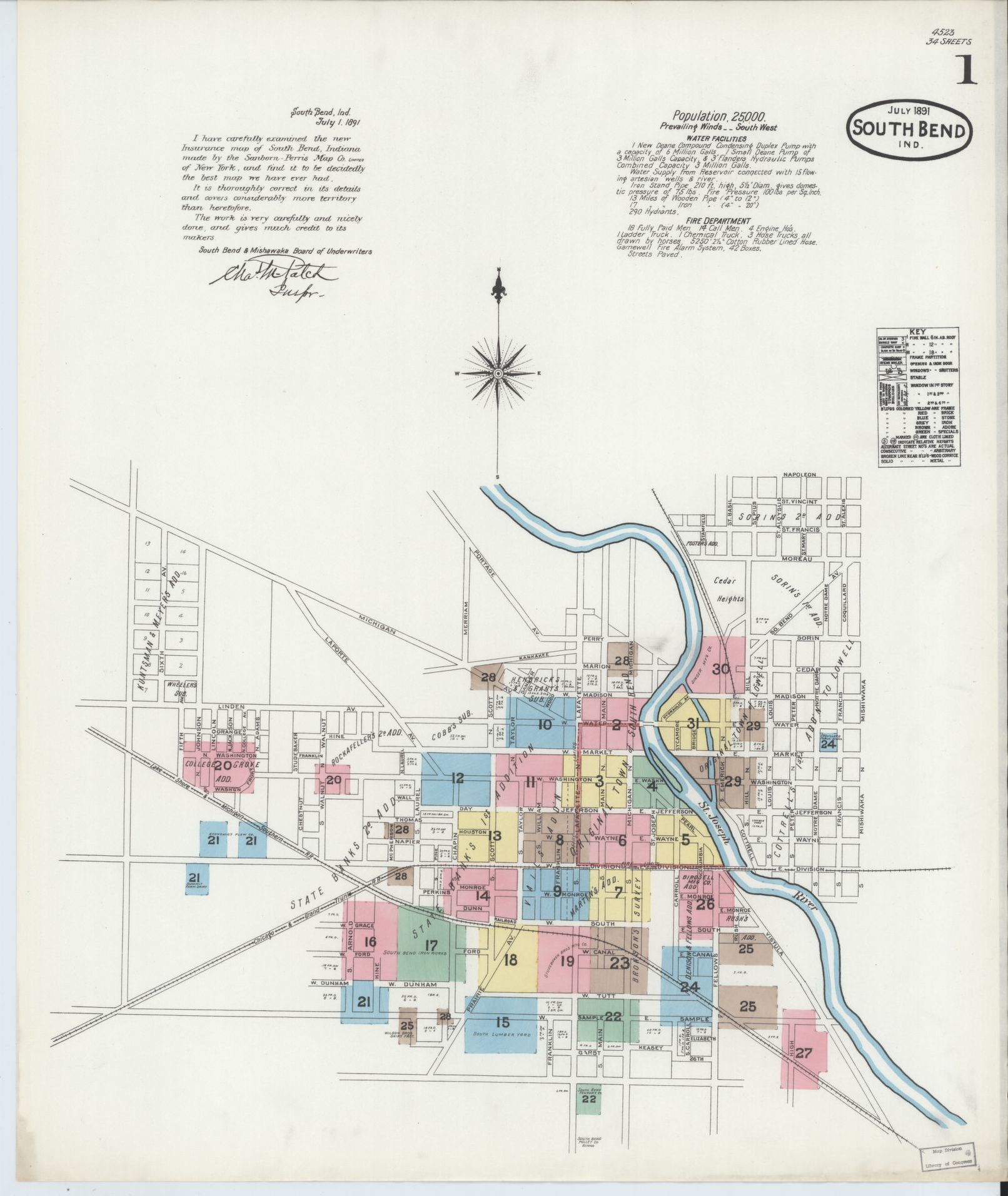
Railroad in the East Bank
The railroad came to South Bend in 1851, with the first through train in October of that year. The line, after consolidation, was known as the Lake Shore and Michigan Southern, but it didn’t traverse the East Bank area. Later, in 1870, the Michigan Central line came down with a branch line which terminated at the Singer Manufacturing Company facility on East Madison, with railroad yards across Niles Street (then called Emmerick) to the east. Finally, a conglomerate of various companies conspired to bring the Grand Trunk Railroad through South Bend. At first it operated under the name of the Chicago & Lake Huron company, but by 1879 it was taken over by the Grand Trunk of Canada. 27 This east/west line bisected the East Bank in the south and a concrete and steel railroad bridge was erected in 1929 across the St. Joseph River at the foot of Howard Park.
Although the railroad line has long since vanished, this bridge recalls the era when rails carried the manufactured goods of the town to Port Huron in the east, or north to Chicago.
About the time that the East Bank was annexed into South Bend, the municipality (which had also just been incorporated) established its first systematic grades for streets. Most streets during this era were gravel, with a few gutters or streets paved in cobblestones. It wasn’t until 1889 that the city began paving streets in brick. Money was scarce for such improvements, which had, by law, to come within a two percent limit of indebtedness.
Based on information provided to the National Park Service.